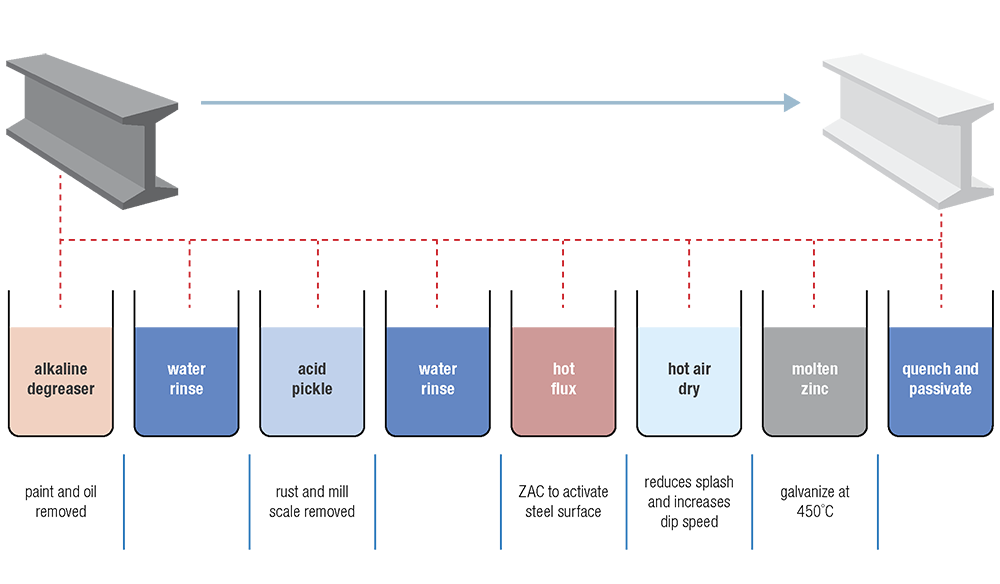The galvanizing process is a method of applying a protective zinc coating to steel or iron products to prevent corrosion. Here's an overview of the key steps involved in the galvanizing process:
Surface Preparation:
The steel or iron surface is cleaned and descaled to remove any dirt, oil, rust, or other contaminants. This is typically done through a combination of degreasing, pickling, and fluxing.
Pickling:
The cleaned parts are immersed in an acid solution, usually hydrochloric or sulfuric acid, to remove any remaining rust and scale from the surface.
Fluxing:
The pickled parts are then dipped in a flux solution, typically a zinc ammonium chloride solution. The flux helps remove any remaining oxides and promotes the bonding of the zinc coating to the base metal.
Galvanizing:
The fluxed parts are then dipped into a molten zinc bath, typically maintained at a temperature between 445°C (833°F) and 465°C (869°F). The zinc coating forms a series of zinc-iron alloy layers that provide strong adhesion to the base metal.
Cooling and Finishing:
After the galvanizing process, the parts are removed from the zinc bath and allowed to cool. During cooling, the zinc coating may form a crystalline pattern on the surface, known as the "spangle."

Depending on the application, the galvanized parts may undergo additional finishing steps, such as passivation or chromating, to enhance the corrosion resistance or aesthetic appearance.
The galvanizing process provides excellent protection against corrosion by forming a durable, sacrificial zinc coating on the steel or iron surface. The zinc coating acts as a barrier, protecting the underlying metal from exposure to moisture, chemicals, and atmospheric conditions that can lead to rust and deterioration. Galvanized products are widely used in a variety of applications, such as construction, automotive, and infrastructure, where corrosion resistance is crucial.